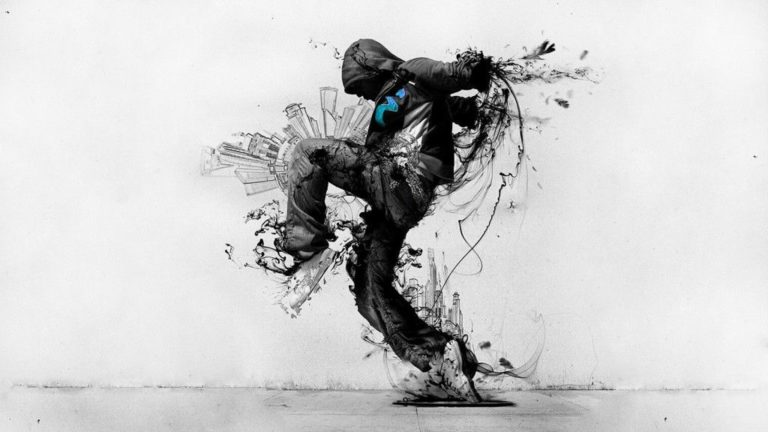
Drill music, originating from Chicago, is a form of rap music. Its beats, flow, and the way it’s produced, differentiates it from its predecessor, grime music.
Most drill artists are young people with plenty to say on issues like climate change, politics, and austerity. However, historically, the lyrics of many drill songs focus on gang culture and gang rivalries as well as life on the streets including drugs, money, and sex.
Drill music has promoted plenty of debate; does its dark lyrics and gritty beats, encourage criminal behaviour? Or, like grime before it, does it offer young people living in some of the poorest inner city areas, an escape route, a way of earning money from music sales and a first step in escaping poverty, gang life and crime?
Allies see it as a way of young people expressing themselves – talking about their environment, day to day lives and their reality. Some observers think the lyrics are often about obtaining money, status, and power, because these are the things people on the streets don’t have.
The real danger comes when those involved in gang culture, judge the performer’s authenticity on whether the artist will follow through with what they claim, taunt, or threaten in the lyrics of their songs. It’s the perceived and actual threats that put the artists authenticity, credibility, status, and ultimately their personal safety, on the line.
Opponents of drill music see it as a means of giving violence a voice or a way of normalising the violent behaviour drill artists talk about. They see it as a platform for rival gangs to air their ‘beefs’ online, often encouraged or goaded by allies, supporters and opponents. Sometimes with fatal outcomes.
This has led Police to target drill music in their response to tackling violence. They consider that the music has become a way of criminal gangs antagonising each other and making threats which result in violent reprisals being taken on the streets, fuelling the rise in serious youth violence and knife crime.
In 2019, Met Police Commissioner, Cressida Dick said “Drill music is associated with lyrics which are about glamourising serious violence: murder, stabbings…. they describe the stabbings in great detail, joy, and excitement. Extreme violence against women is often talked about.”
The Met Police requested that You Tube take down a number of videos and songs which they considered glamourise violence. You Tube have also now developed policies to tackle the posting of videos linked to or promoting knife crime in the UK.
Critics of this approach point to other social factors fuelling the evolution of UK street gangs, knife crime and youth violence in the UK – with the real drivers being poverty, deprivation, the impact of austerity, a failure by government to tackle social issues, and a lack of opportunity for young people.
In 2019, a study conducted at UCL (Kleinberg & McFarlane) suggested that drill music listeners are more likely to be drawn towards lyrics with a positive overall message even when it contains violent language. An analysis of 550 YouTube videos by 105 London-based drill music artists, found that songs with a more positive sentiment attracted twice as many views and comments.
The debate will continue. And while it does, there are steps that young people who produce their own drill music, can take to reduce the risk of inadvertently becoming a victim of their art.
Firstly, a number of organisations working with young people, promote making drill music safely.
Groups like “Word not Weapons” (see – https://www.facebook.com/thewordsnotweapons), Project Zero (Projectzerowf.co.uk), Audio Active (www.audioactive.org.uk), and Music Fusion (www.musicfusion.org.uk) are committed to supporting young artists and promoting a strong community safety message and advising young people on risk.
Secondly, avoiding producing songs with inflammatory lyrics or videos reduces the risk of becoming a target for reprisals and the possibility that message scan be misinterpreted or misunderstood. Although maybe less of a money-making option, artists can reduce risks by posting music on less public platforms than You Tube, which has become a platform of choice for drill artists.
Family members too have a role. Drill music can be made in bedrooms and be posted in seconds on social media platforms, and subsequently shared many thousands of times. Drill music and videos are also widely available online. Parents or family members, who take the time to share an interest in the music, particularly the lyrics their children are producing, can act as suitable check and balance before any online damage is done. They can also get a flavour of the messages that their children are being exposed to. Opening up a discussion with a young person about the messages in a song, without being judgmental, can help make them more open to hearing your concerns, discussing the dangers, and teaching them to be critical of some of drill music’s messages. Finally, family members can raise concerns about the posting of violent or graphic content on You Tube under the new You Tube Community Guidelines . Similar guidance on potentially harmful or dangerous content or sexually explicit content or videos portraying the exploitation of children and young people is also available online.
